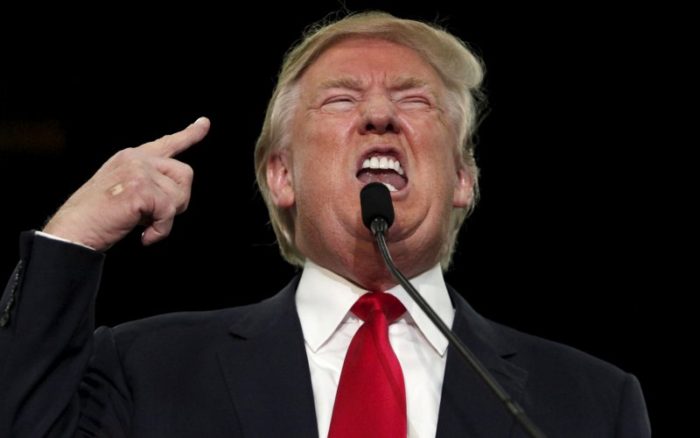Published in the Nikkei Asian Review 23/2/2016
These days populism is all the rage, quite literally. In the US presidential race, populist candidates Donald Trump and Bernie Sanders have been making the running with verbal assaults on immigrants and Wall Street bankers respectively. In Europe populists are in government in seven countries and make up the largest party in five. It is no longer unthinkable that a populist leader could head a major G7 country.
The standard explanation for this phenomenon is economic. Since the global financial crisis of 2008, the world has been “turning Japanese,” with growth weak, deflationary forces entrenched and interest rates in the basement. The resultant mix of economic insecurity and rising inequality has fuelled resentment against the political and business establishment which populists have been able to exploit.
This narrative is fine as far as it goes, but one important detail is missing. Japan itself never experienced a surge in support for populism. Despite the so-called “lost decades” of deflationary stagnation, there was no Japanese equivalent of Donald Trump, Marine Le Pen or Poland’s Law and Justice Party. The current Prime Minister, Shinzo Abe, is an establishment figure whose father served as foreign minister, his grandfather as prime minister, and his great uncle, also a prime minister, won the Nobel Peace Prize. In electoral terms the ruling Liberal Democratic Party, which has been almost continuously in power since 1955, remains the only game in town.
Political stability in tough times is not down to some quirk of Japanese cultural DNA. During the Showa depression of the early 1930s, right-wing fanatics of the League of Blood drew up a list of twenty members of the political and business establishment for assassination. In a protest against the “austerity” of the day, they succeeded in killing the finance minister who had taken Japan back onto the gold standard and the head of the Mitsui group, which was rumoured to be hoarding dollars. In the post-war period, acts of terror from the extremes of right and left were part of the political scenery into the 1970s.
So why no populist revolt after Japan’s economic bubble collapsed in 1990? According to Professor Cas Mudde of Georgia University, populism is “an illiberal democratic response to undemocratic liberalism. It criticises the exclusion of important issues from the political agenda by the elites and calls for their repoliticisation.” In other words, for populism to succeed it needs a specific political context; one in which there is a large and growing gap in wealth, power and cultural values between the elite and the rest of society.
This was the case in 1930s Japan when “undemocratic liberalism” ran amok. A small, wealthy Westernized elite saw the gold standard as a vital symbol of advanced nationhood and drove a largely agricultural economy into a deep depression in which farmers had to sell their daughters into prostitution to pay off debts.
Nothing of similar scale has happened in today’s world, but for the countries of southern Europe the euro has some of the characteristics of the gold standard. Meanwhile in all developed countries globalization and, most visibly, mass immigration is increasing the gap between rich and poor and exacerbating social fracture. The conflict between liberalism and democracy is heating up.
Japan is not immune from these economic pressures, but the gap between the elites and the rest of society is much narrower in all respects. The head of Japan’s largest bank takes home less than 5% of the remuneration of J.P. Morgan’s Jamie Dimon and there are more billionaires in Istanbul than in the whole of Japan. When the producers of The Apprentice reality TV show tried to bring the concept to Japan, they could not find any well-known businessman willing to accept the role of the ruthless, bullying boss.
Wealthy business-owners do exist, but they tend to be fairly modest in their personal habits. An example is Kazuo Inamori, the legendary founder of Kyocera who took on the responsibility of turning round the bankrupt national carrier Japan Airlines at the age of 77. Twelve years earlier Inamori was ordained a Zen Buddhist monk. At a temple near Kyoto, he studied the perfection of the six virtues which include fuse, the act of selfless giving and jikai, the avoidance of greed, anger and ignorance.
In terms of cultural values too, Japanese political and business leaders do not stray far from the national consensus. Japan takes a tiny number of refugees – only those who can prove that they genuinely qualify – and eschews mass immigration because that is what public opinion wants. For the same reason Japan retains the death penalty, has not legalized marijuana and, despite the absence of any religious prohibition, is in no hurry to allow gay marriage. To use Professor Mudde’s formulation, Japan is less liberal than most Western countries, but more democratic.
There was a brief period, in the wake of the global financial crisis when it seemed that populism might thrive. The Japanese economy was in severe recession, yet the Bank of Japan continued to follow a deflationary monetary policy. Japan’s version of The Donald was Osaka Mayor Toru Hashimoto, a motor-mouthed former TV personality who set up the Japan Restoration Society in an attempt to take his local appeal onto the national stage. However when Shinzo Abe rode into town with his Abenomics reflation programme, the populist window slammed shut.
Today Japan’s male employment ratio – the percentage of the 15-64 year old population in work – is the highest in the G7 and barely changed since 1990. The female ratio has risen to an all-time high and is now slightly higher than in the US. Meanwhile the Japan Restoration Party has disintegrated like overboiled tofu.
The real reason why populism has failed in Japan is because the elites have been too smart to give it space. They know where it leads.
